Commonly known as AME,APO MACRO ELMARIT 100
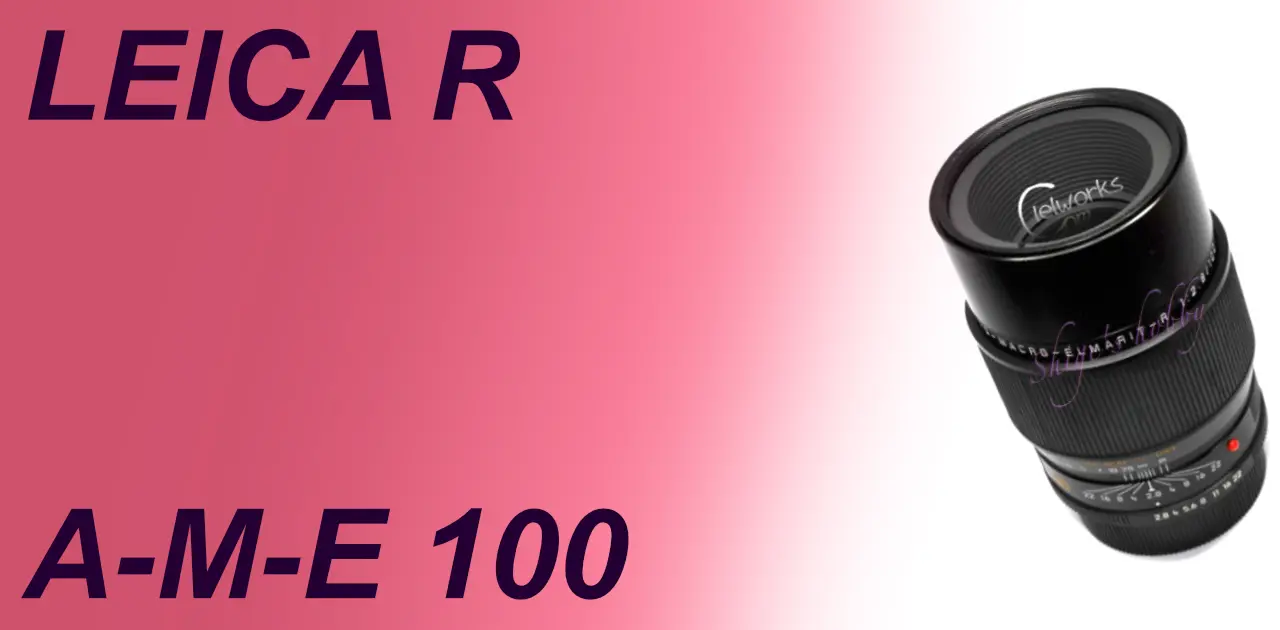
A review and Photo example the APO MACRO ELMARIT 100mm for Leica R.
Table of contents
Gallery
The following cameras were used to take the sample photos:
- LEICA SL typ601 (mirrorless digital camera)
- LEICA R8 +KODAK GOLD200
- SONY α7Sii
Review
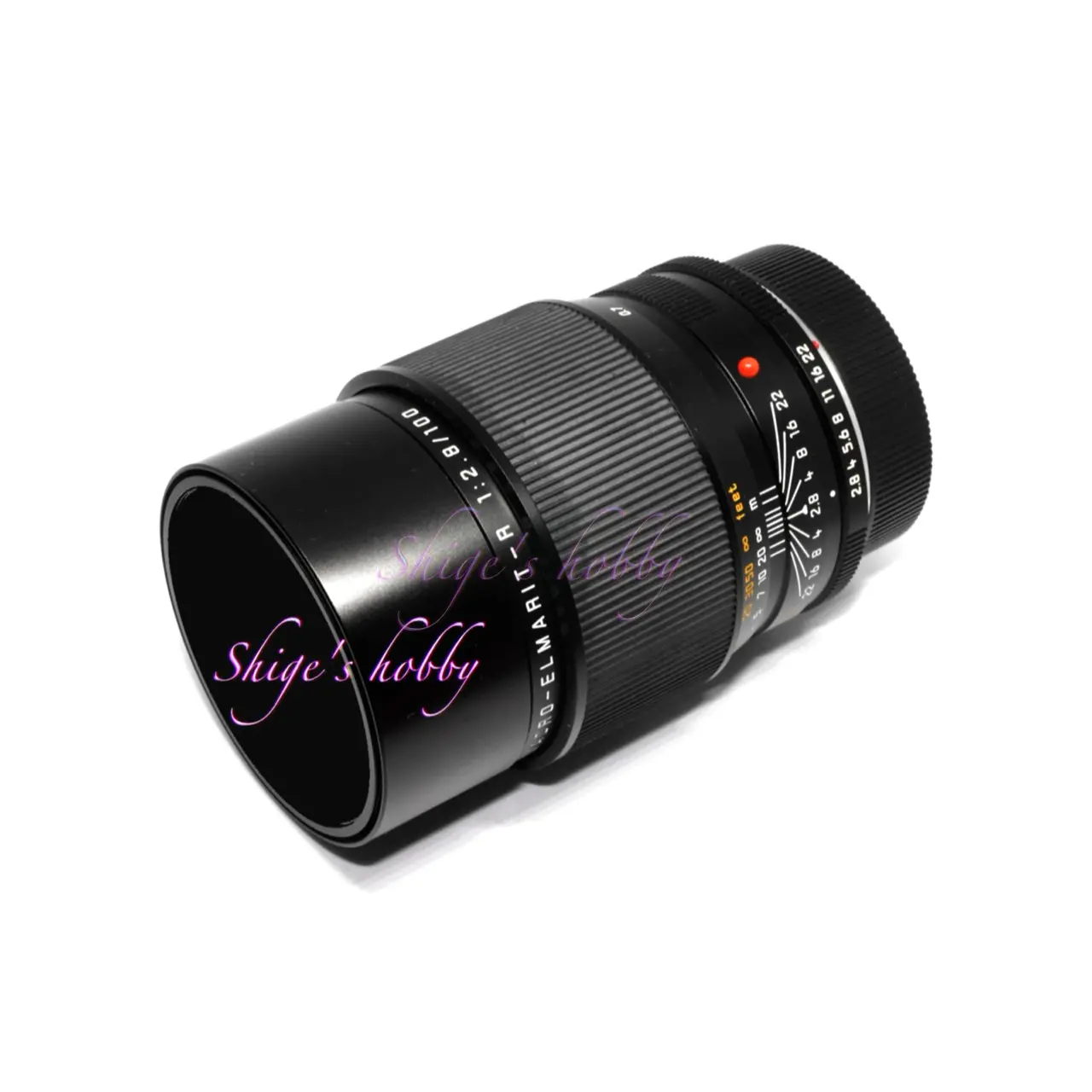
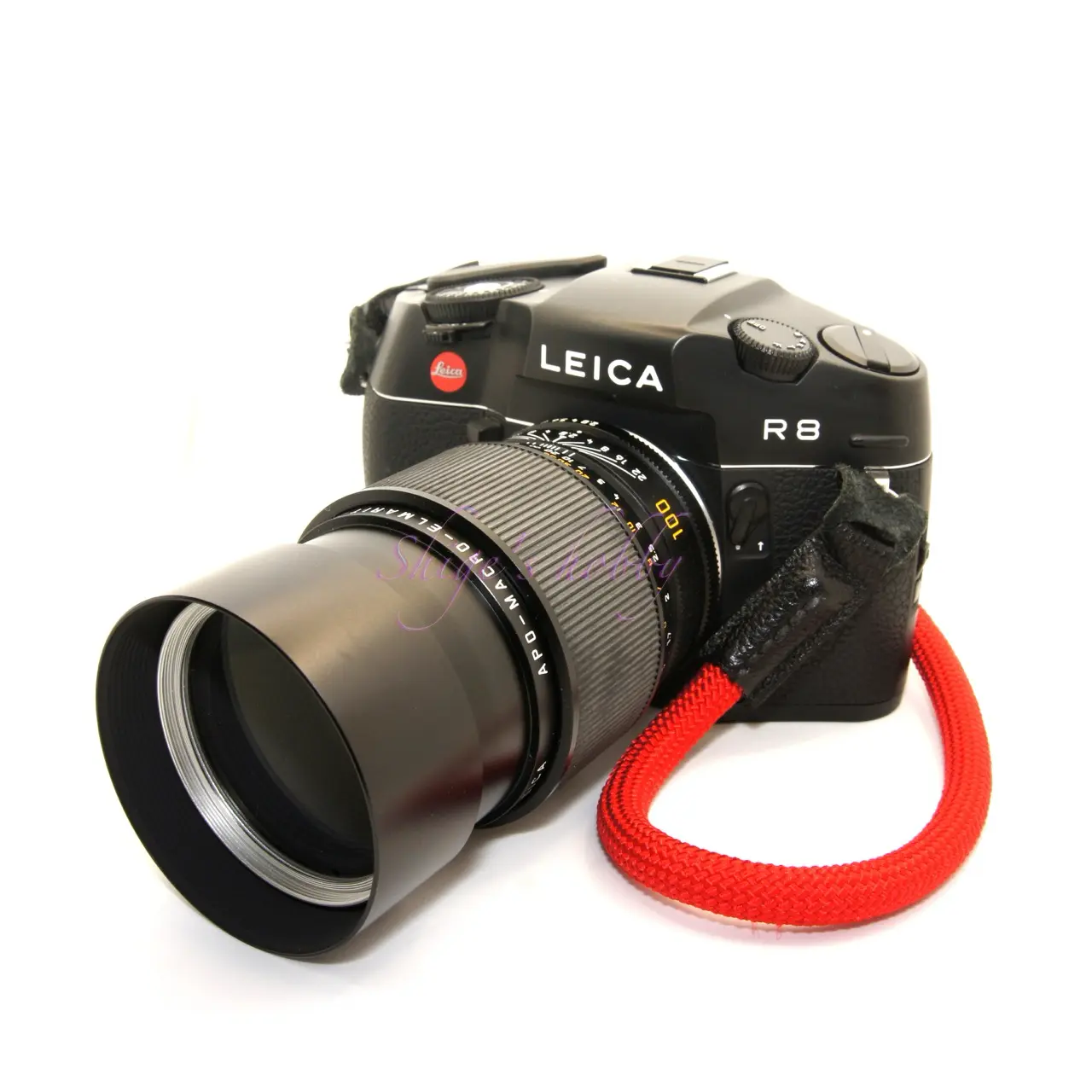
1.Overview
The APO Macro Elmarit 100mm is a macro lens for Leica R mount released in 1986.
The main specifications are as follows, and detailed specifications are listed in the table.
- Aperture value: 2.8
- Lens construction: 8 elements in 6 groups
- Aperture blades: 7
- Minimum shooting distance: 0.45m
- Maximum shooting magnification: 1:2
- When using ELPRO 1:2-1:1 FOR R 2.8/100: 1:1
- Hood: Built-in retractable type
- Filter diameter: 60mm (E60)
The LEICA WIKI records that 20,000 units were shipped between 1986 and 2000.
R mount variations include 3-CAM, R-CAM, and ROM.
2.Usability
The Apo Macro Elmarit 100mm is one of the famous Leica R lenses, also known as AME, which is the acronym for APO MACRO ELMARIT. Perhaps because of the large number of lenses shipped, it is relatively common on the second-hand market.
The lens hood is built-in and is used by pulling out the hood attached to the tip of the lens.
The hood has no stopper, giving the impression of being loose, but it is a matter of preference as there is a possibility that the lens will be less damaged if it is not fixed when dropped.
Because it is a macro lens, the focus ring is wide at about 40 mm, and the helicoid has a rotation angle of about 720 degrees, so if it is in good condition, precise focusing is possible with the appropriate helicoid tenacity.
The trend in lenses in the 2000s is not limited to macro lenses, but there is a tendency to emphasize resolution in line with the digital age, but this lens has an old design and has a soft depiction that inherits the lineage of Leica macro lenses.
Turning the smooth focus ring with a sufficient width and searching for the desired location while watching the focus position in the viewfinder, you can enjoy the pleasure of operating a manual lens.
This is not a good example, but when using the APO MCRO ELMARIT 60mm F2.8 on the LEICA TL with autofocus, it is not pleasant that the focus does not stop at a visually noticeable focus position. In the end, I used this lens with manual focus, but since it is an autofocus lens, the focus ring has no torque, so it took a unique getting used to focusing.
When using with a single-lens reflex camera, there are times when you are concerned about the focus accuracy at full aperture depending on the viewfinder and the photographer’s skill, but in the digital age where EVFs can be used, there is no problem with the focus position as long as you focus carefully.
Some models have image stabilization on the body, so you can say that you are experiencing a process of camera evolution that was unimaginable in the film era.
Because the lens does not have a protrusion at the rear, it could be used without any problems with the EOS-1Ds MK III, which is sensitive to lens attachment.
This lens is designed so that the maximum shooting magnification is 1:2 when extended to the minimum shooting distance of 0.45m, making it a lens known as a half-macro lens.
To achieve the maximum shooting magnification of 1:1, it is necessary to use an optional lens called ELPRO, which screws onto the front of the lens. The ELPRO screws into the 60mm filter part. When this is attached, the hood cannot be pulled out.
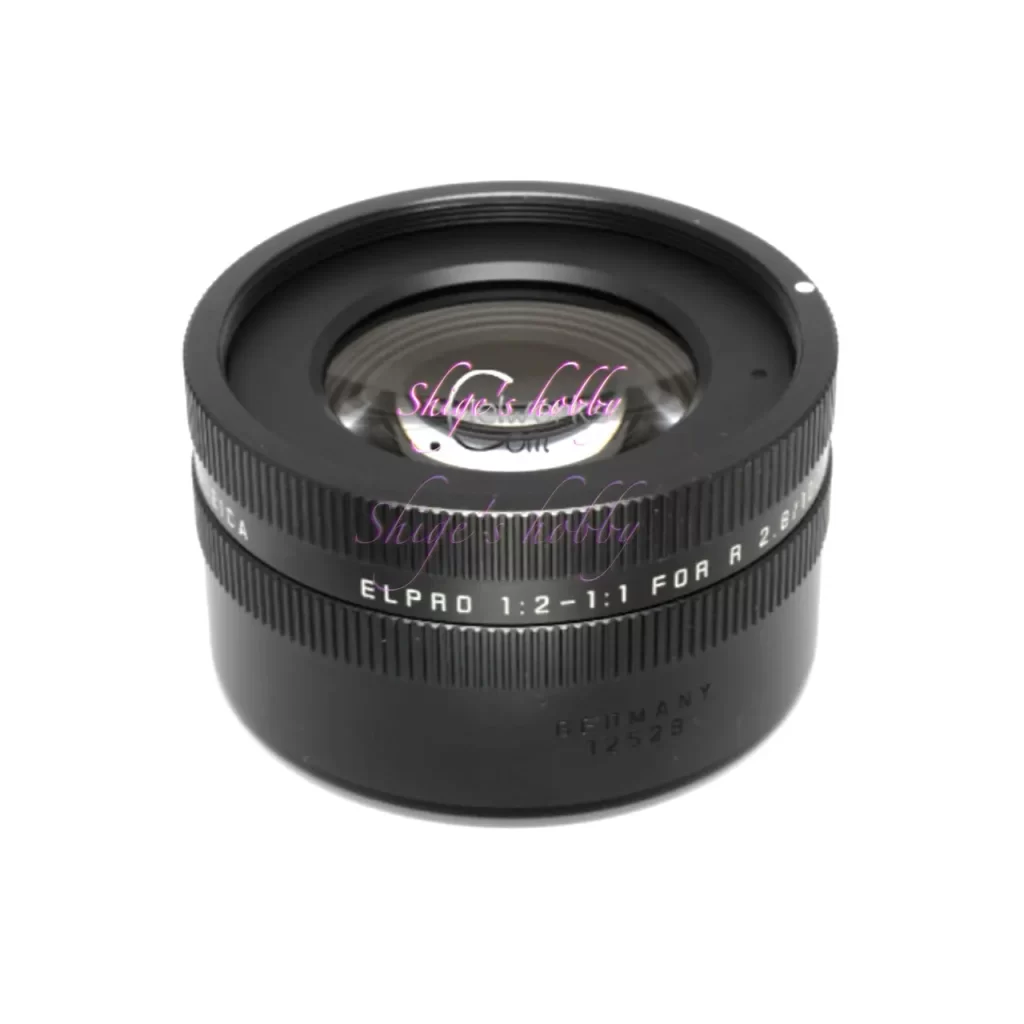
3.Summary
To sum up the APO MACRO ELMARIT R 100mm F2.8, it is an R-mount half macro lens that is impressive for its soft depiction when shooting close up, and when the optional ELPRO is attached, it is possible to shoot at 1:1.
It is one of the most popular R-mount lenses, along with the SUMMILUX 80 and SUMMILUX 35.
Competitive Lens
A lens to compare with the AME100 would be the CARL ZEISS MAKRO PLANAR 100 (MP100), which has the same manual focus and Yashica/CONTAX mount.
At CARL ZEISS, the word macro is written as MAKRO, which is the German word for “big, large”. As an aside, Nikon’s macro lenses are called Micro-Nikkor. For the origin of Nikon’s micro notation, see Nikon’s One Thousand and One Nights: Night 25 Ai Micro Nikkor 55mm F2.8 (Part 1).
1x macro or half macro
The two lenses were released in roughly the same time, the AME100 in 1986 and the MP100 in 1985, and it is thought that the design and manufacturing technology were at roughly the same level.
The biggest difference between the two lenses in terms of specifications is that, despite both having the same focal length of 100mm and the same minimum shooting distance of 0.45m, the lens magnification is different.
The magnifications of the two lenses are as follows.
- The AME100 is a half macro with a magnification of 1:2 for the lens alone.
- The MP100 is a life-size macro with a magnification of 1:1 for the lens alone.
There is a lot of information on the difference between life-size macro and half macro on the Internet, but to summarize briefly, when an object is photographed, the state in which the object is the same size as the actual object on the film or sensor is called life-size 1:1, and the state in which it is half the size is called half 1:2.
With digital cameras, the image on the sensor is viewed on a monitor, so it is difficult to compare the actual size and the size of the object photographed on the monitor, and in the digital age, this is a description that is difficult to understand.
Life-size macro can capture a larger subject, but there are many situations in which half macro is sufficient.
Focus Method
The two lenses use different focusing methods.
- AME100 Front focus type
- The front focus type is a method in which the focus position is adjusted by moving only the front lens group, and the focal length changes depending on the focus position.
- MP100 Full group extension
- Full group extension is a method of adjusting the focus position by moving both the front and rear groups, so the focal length does not change depending on the focus position, and there is little variation in aberration.
The difference in this extension method is the difference in the means to achieve the set performance.
The previously mentioned 1:1 macro and half macro are one of the set performances, and other set performances include cost and image quality.
Lens length comparison
It is interesting to see how the lens size changes when shooting due to this difference in focus method.
The lens length at the focal length of ∞ is 105mm for the AME100 and 87mm for the MP100, so the AME is longer, and the MP100 can be said to be compact when stored.
The lens length at the shortest shooting distance is 152mm for the AME100 and 172mm for the MP, so the MP is longer, and the MP100 changes the weight balance of the camera more when shooting. This may be a concern for some photographers.
The lens length differs by about 2 mm when the difference in lens flange back is taken into account, but since I want to show that the sizes are reversed here, the difference in flange back is ignored.
Full extension is not a condition for life-size macro, and other focus methods, including the front focus of the AME100, can also be used to achieve life-size shooting magnification. The HASSELBLAD HC 120mm that I own is a life-size macro with front focus.
I don’t have much experience with the Yashica/CONTAX mount and have never actually used this lens, so I don’t have any photos of it when extended, but I will post a photo of the CONTAX 645 APO MAKRO PLANAR 120mm, the older brother of the MAKRO PLANAR 100, because it has the same full extension as the MP100. You can see the MP100 in its fully extended state on the Lens.DB site in the reference link.
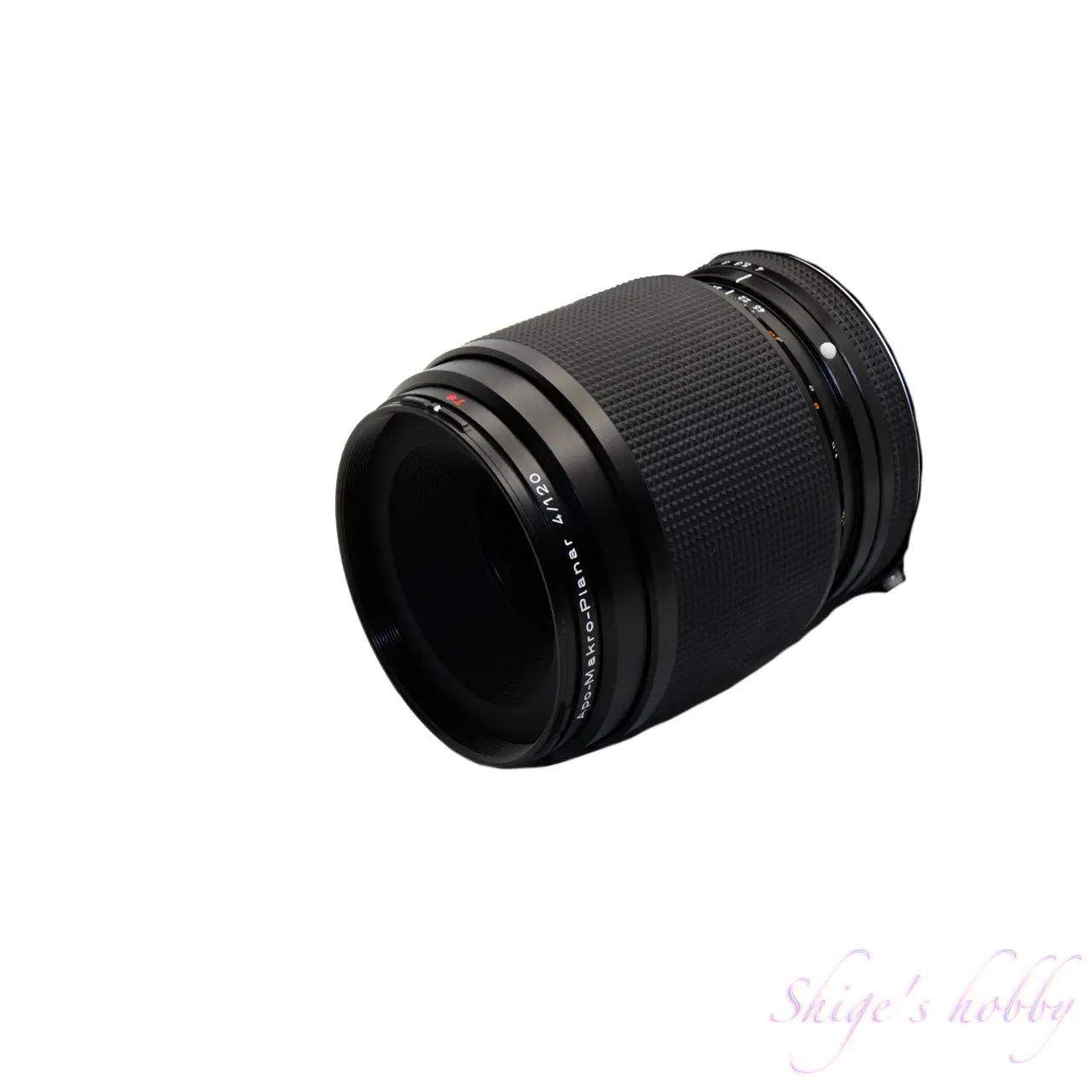
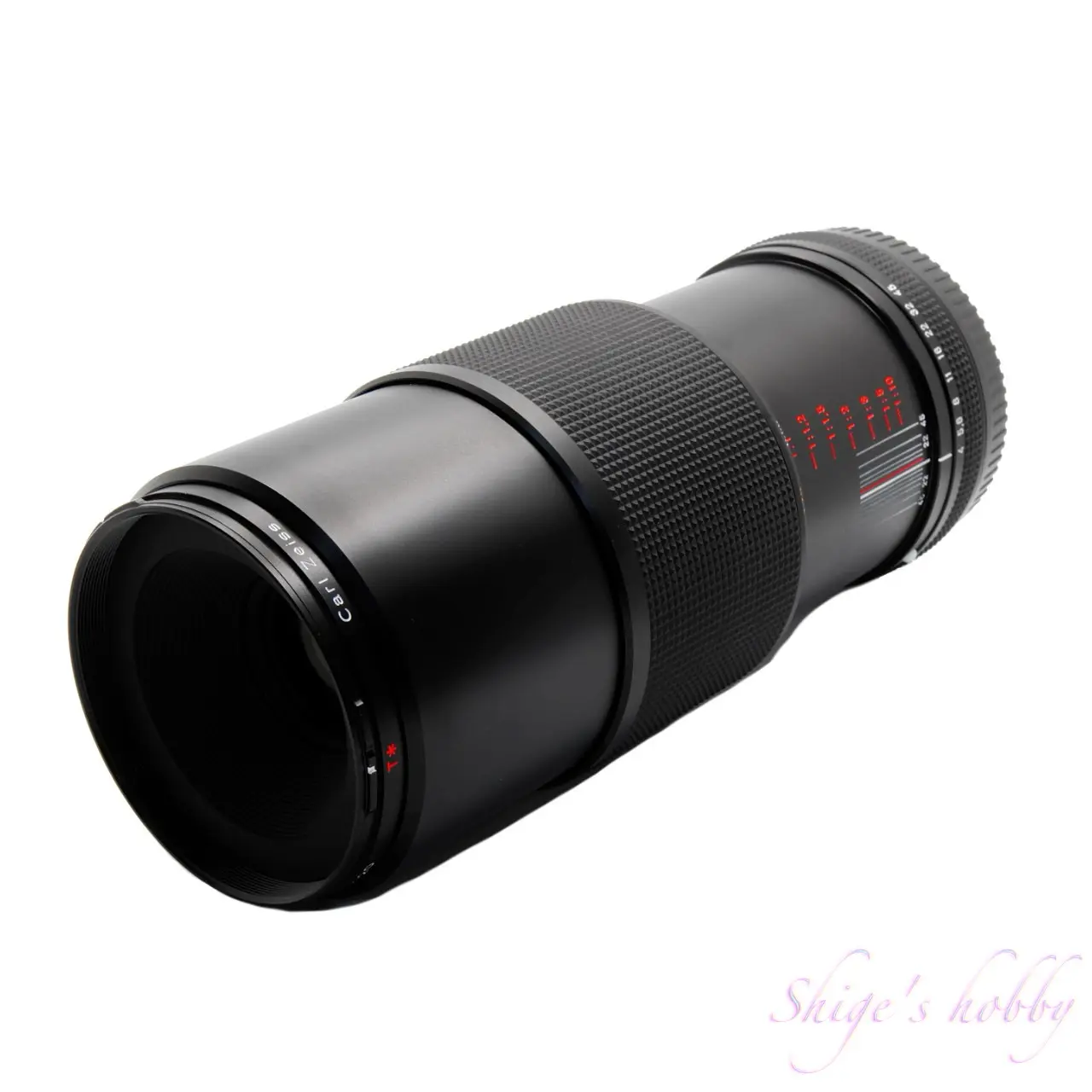
The CONTAX 645 APO MAKRO PLANAR 120mm is a lens that can take life-size photographs. As the APO designation suggests, this lens is better at correcting chromatic aberration than general lenses.
There are many excellent medium telephoto macro lenses available from various companies, including the TMRON 90mm, ZEISS 100mm, NIKON 105mm, and others, making this a lens with a focal length that photographers can choose from.
Specification and Competitor
| Item | AME | Macro Elmar |
| focal length(mm) | 100 | ← |
| Maximum aperture | 2.8 | 4 |
| Minimum aperture | 22 | ← |
| Leaf blade | 7 | 8 |
| Lens configuration | 8elements in 6groups | 4elements in 3groups |
| Minimum distance(m) | 0.45 | 0.6 |
| Lens length(mm) | 104.5 | 92 |
| Lens max diameter(mm) | 73 | 67.5 |
| Filter diameter(mm) | 55 | ← |
| Weight(g) | 760 | 540 |
| Release date | 1986 | 1968 |
| Production number | 20,000 | 16,254 |
- The lens construction diagrams are quoted from each company’s PDF, and the sizes have been adjusted by us, so they are not exact.
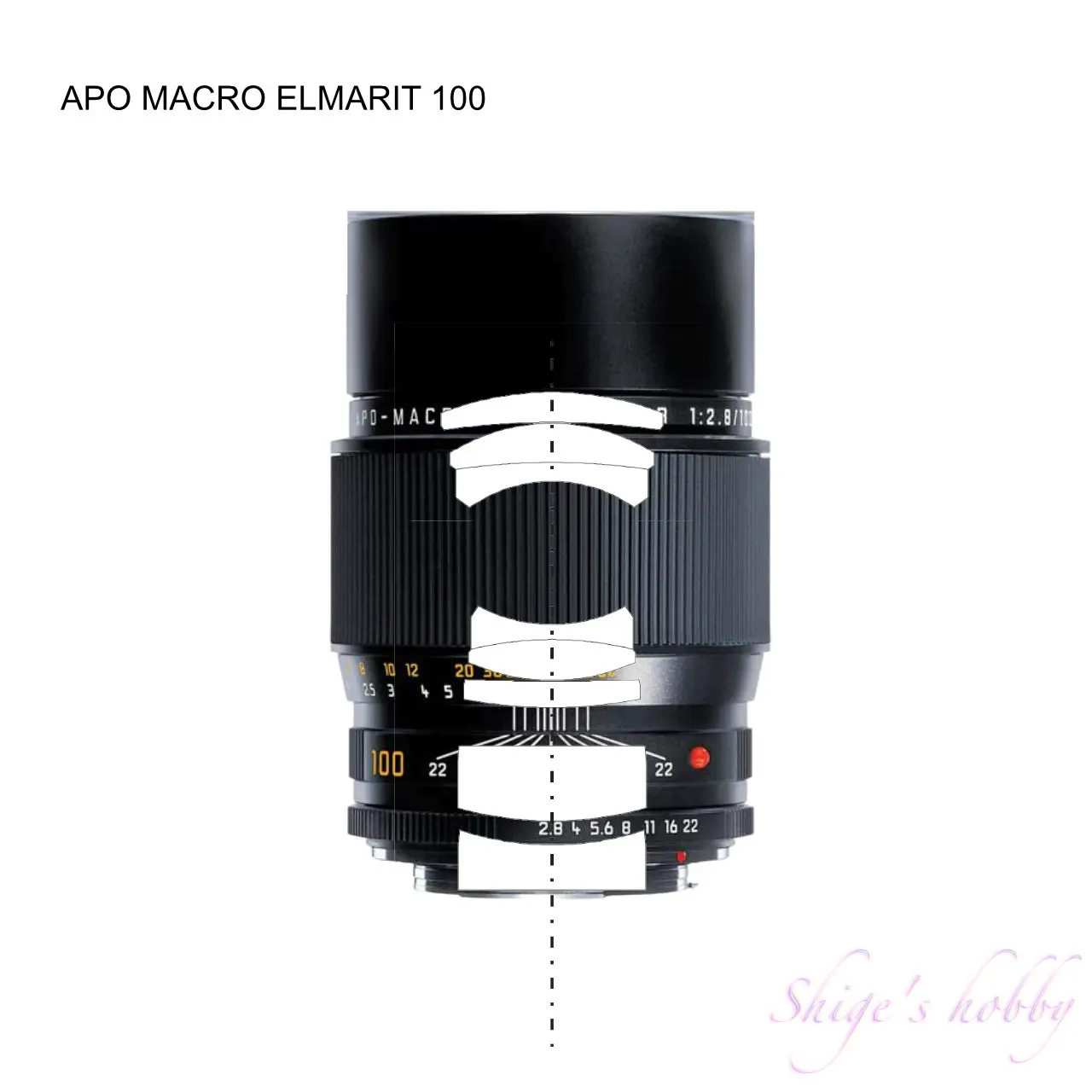
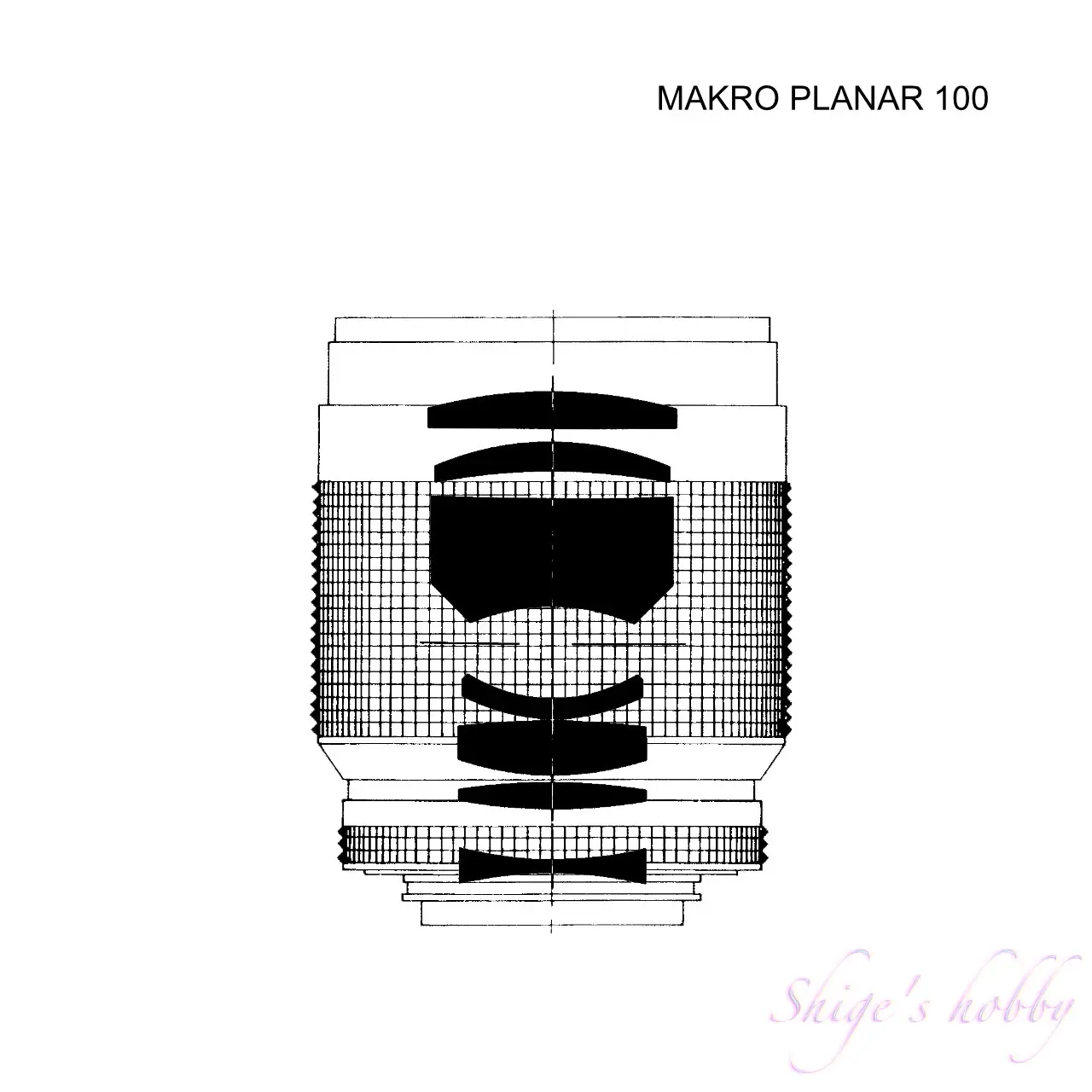
Reference links
- APO MACRO ELMARIT 100mm F2.8 Leica wiki
- Nikon One Thousand and One Nights: Night 25 Ai Micro Nikkor 55mm F2.8 (Part 1)
- LEND.DB Carl Zeiss Makro-Planar T* 100mm F/2.8 [AE]
- A Walk Through Camera Terms No. 15: Image Magnification and Shooting Magnification (Part 1) – Digital Camera Watch
- An eye-opener! Takashi Namiki’s flower photography techniques | How to use a macro lens you never knew about – Kitamura Camera ShaSha
- Digital camera Q&A answer “Please tell me the focusing method and features of the lens.” – Fujifilm
- All about the R-type Leica / Author: Shinichi Nakamura / Edited by Asahi Sonorama ・Ads by Amazon
Update history
- 2025.3.31
- 2024.10.18
- 2024.2.9:Update the article
- 2022.1.31:First draft
Affiliate links
- Leica Lens・Ads by Amazon
- Leica Books・Ads by Amazon
- LEICA R used lens・Ads by Rakuten

Leave a Reply